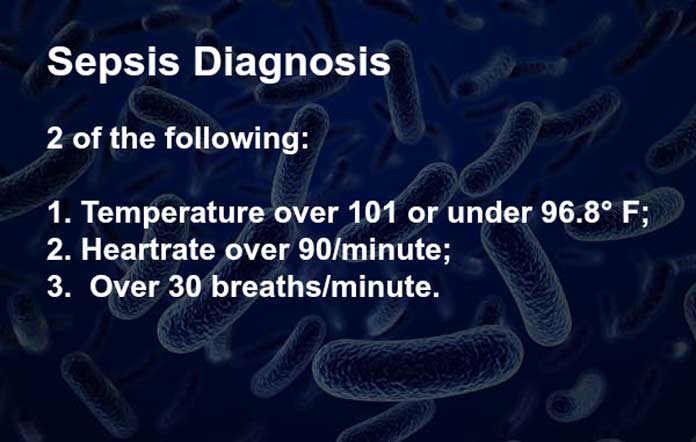
If sepsis is not quickly diagnosed, organs can shut down and gangrene can ravage limbs. The CDC has recently made an effort to make doctors, nurses and other healthcare professionals aware of the need for sepsis evaluation. As part of this effort, CDC is looking at the accuracy of current sepsis statistics.
In last week’s Morbidity and Mortality Weekly Report, the CDC addresses the current difficulties with estimating sepsis mortality.
Sepsis is a syndrome caused by the body’s overreaction to an infection. Chemicals meant fight the infection trigger an inflammatory response that can cause inflammation of organs, blood clots in organs and blood clots in limbs. This can lead to organ failure, gangrene (sometimes requiring amputation), and death.
There is no diagnostic test that can confirm sepsis, so “diagnosis is based on clinical judgement of suspected infection” (CDC). According to the Mayo Clinic, “to be diagnosed with sepsis, you must exhibit at least two of the following symptoms, plus a probable or confirmed infection”:
- fever above 101 degrees F;
- body temperature below 96.8 degrees F;
- heart rate higher than 90 beats a minute;
- shortness of breath (respiratory rate over 20 breaths per minute).
The mortality rate, according to the CDC, is from 28 to 50 percent, but these numbers may be wrong because of the issues with diagnosis and the variable treatment of sepsis on autopsy reports:
- Because there is no confirmatory diagnostic test, the diagnosis of sepsis is based on clinical judgement of suspected infection.
- Data from both death certificate and administrative claims data have been used to assess sepsis incidence and mortality, but estimates vary depending on the surveillance definition and data source.
CDC Study
To highlight the challenges and variability associated with estimating sepsis mortality, CDC compared national estimates of sepsis-related mortality based on death certificates with previously published sepsis mortality estimates generated using administrative claims data. Using death certificate data for the period 1999–2014, CDC found that a total of 2,470,666 decedents (6% of all deaths) had sepsis listed among the causes of death (sepsis-related deaths); for 22% of these decedents, sepsis was listed as the underlying cause of death. For the period 2004–2009, in a previously published report, investigators analyzed administrative claims data using four approaches for identifying adult patients (aged ≥18 years) with sepsis. In data rounded to thousands, the annual range of published sepsis-related mortality estimates based on administrative claims data was 15% to 140% higher (range = 168,000–381,000) than annual estimates generated using death certificate data (multiple causes) (range = 146,000–159,000).
The variability of data found in this study highlights the need for “a reliable sepsis surveillance definition based on objective clinical data.” This is needed “to more accurately track national sepsis trends and enable ongoing assessment of the impact of efforts to increase sepsis awareness and prevention,” according to the CDC.
The numbers in this study also suggest that the 28-50% mortality rate on the CDC website (click here) may not be right, and these numbers are certainly not accurate without more information. The 50% rate, we think, is for patients who go into septic shock. The 28% percent, we think, for people who have severe sepsis but do not go into septic shock. This should be made more clear on the CDC website.
CDC Director Dr. Tom Frieden discusses sepsis and the need to identify sepsis early to prevent death.
